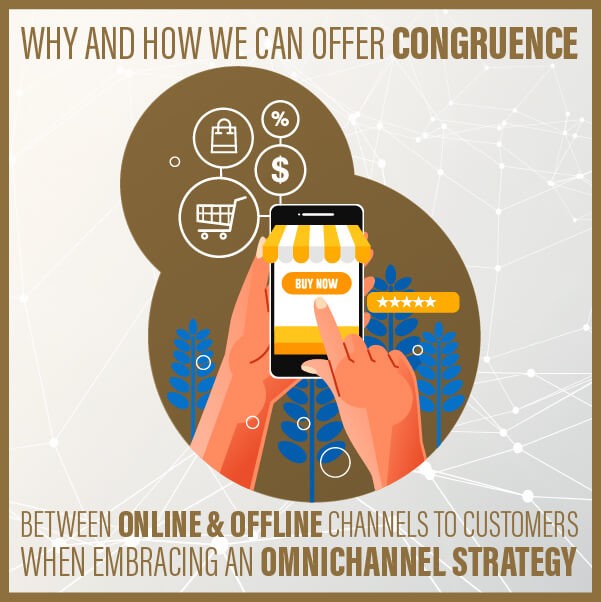Rev iewer
iewer
Dr. Luciano Thomé e Castro, International Adjunct Professor
Article
Can off-line-online congruence explain online loyalty in electronic commerce? by Ruiz-Molina, Maria Eugenia, Gomez-Borja Miguel-Angel & Molla-Descals Alejandro
Journal
International Journal of Retail & Distribution Management Vol. 49 No. 9, 2021
Summary
A recently published paper in the International Journal of Retail and Distribution Management studied the effect of channel congruence on customers’ online loyalty. In a nutshell, the authors found that customers showing the highest scores in all congruence attribute perceptions between online and offline channels also show higher loyalty toward online stores. This is an important finding as one could assume that if a purchase experience moves online, the customer making the purchase could become less loyal as he or she is just one click away from purchasing from another online competitor, lowering rather than growing customer loyalty. In other words, online channels do not necessarily mean channel commoditization, which is good news for marketers looking for differentiation strategies.
Rather than covering details of the hypothesis constructions and quantitative tests of this study, this summary will explore the conceptual construction of the authors on channel congruence as they shed light on what it is, why it is important and how to achieve perceived channel congruence. While many industries, including agribusiness, are designing online channels and often struggle with integrating them into existing brick-and-mortar channels, having some insights about channel congruence could prove helpful.
First, how is channel congruence defined? The authors define it as: “when characteristics of the online store match consumers’ expectations about the retailer, congruity, i.e. the perceived similarity or mismatch in salient store-related attributes, exists”. It is important to note the use of the word “perceived” in the definition, which means we are not talking about operational synergies, although they might exist. Rather, we are talking about the customers’ perspective forming perceptions.
Second, why is perceived channel congruence important? The text helps answer this question by stating channel congruence will, “condition the processing mode that consumers develop when confronted with new stimuli. Then, if there is a high level of congruence between the consumer brand expectations about the retailer brand formed offline and the new channel (i.e. online store), consumers will rely on a more holistic approach to evaluate the new channel and possibly mimic their behaviors in the new online context, including loyalty patterns. This comprehensive processing means a more direct attitude transfer process. On the other side, if there is a mismatch (i.e. perceived incongruence), this direct and holistic transfer might not take place, enhancing a more detailed and effortful evaluation process and, maybe, a more negative predisposition from the shopper perspective”.
Third, it is worth exploring what attributes of congruence the paper used to test their effect on customer online loyalty. Congruence means that the perception between online and brick-and-mortar stores is very close. Getting into the details of each attribute, the strength of their impact and how it might vary according to product categories would be interesting, but in this summary, we use the concept more like a checklist to search for a general orientation for those thinking about channel integration. These topics provide good direction on how we might use this concept to think of an online channel solution or even redesign an existing one.
The congruence attributes are as follows: (1) Aesthetic appeal, including the feel of the store, images used and the display of products in the store; (2) Navigation convenience, including ease of finding what you are looking for, ease of navigating the store, and the extent to which the store is organized; (3) Transaction convenience, including ease of purchasing items in-store, ease of paying for items in-store and ease of completing transactions in-store; (4) Atmosphere, including how fun the store is, how attractive the store is and how pleasurable the store is; (5) Service congruence, including how friendly the service is, how helpful the service is, how good the service is, how knowledgeable the service providers are and how fast the service is; (6) Price orientation congruence, including the availability of special deals, notices about sales or new products and the frequency of sales or special deals; and (7) Security congruence, including the safety offered by the store, the security provided for shoppers and the security provided for transactions. As mentioned above, these seven topics may provide guidance for one thinking about what to review when reflecting on channel congruence and designing the overall channel strategy.
What this means for Food and Agricultural Business
There are many potential parallels we could think of when analyzing how the information above could relate to food and agricultural business. For example, think about two critical touchpoints farmers have with external agents: one is buying ag inputs from brick-and-mortar ag retailers or their e-commerce alternatives, and the second is selling their production output to traditional grain trading companies or their existing online trading platforms.
Even though the online environment is far different from the field reality of these retailers or grain traders, we can think of the attributes as a guide for designing online alternatives for customers. In the end, the idea should not offer a commoditized channel, but instead build this congruence perception. Ag retailers or traders should think of building online experiences congruent with their traditional structures and adding the gains of an online alternative with the goal of a superior and seamless farmer customer experience.




